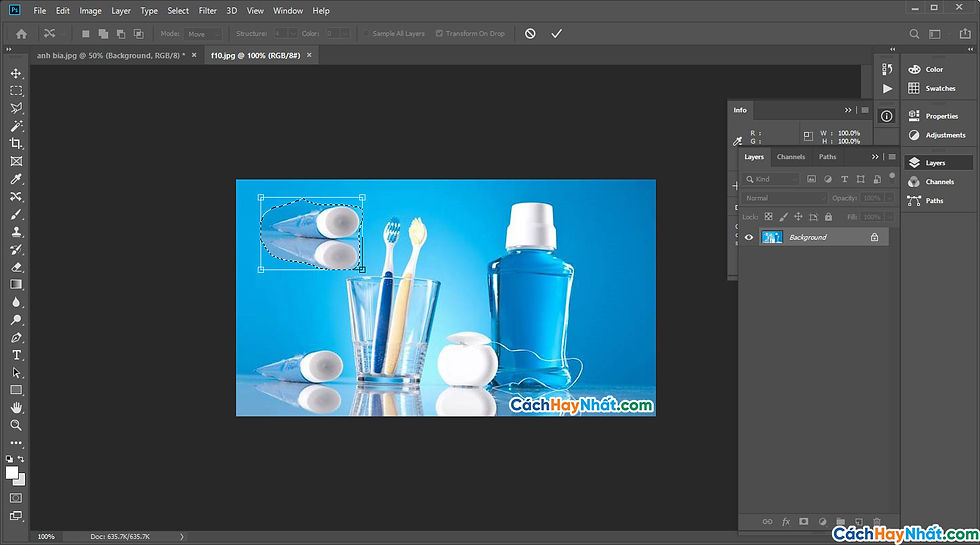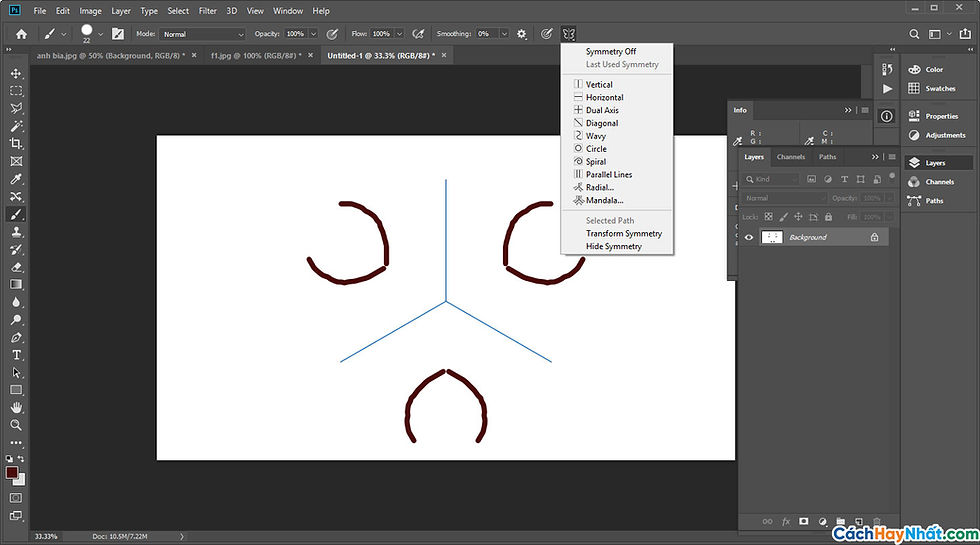9 Things You Didn't Know You Can Do With Photoshop
- Cách Hay Nhất
- Jun 18, 2021
- 5 min read
Boost your skills with 9 tricks you probably missed

Photoshop is a perfect example of anything that is much larger than the sum of its parts; an exploding treasure trove of tools, settings and filters. It is constantly evolving and regular updates improve the user experience and make it more accessible to a wider audience. As a result, it's easy to miss out on some less obvious new features and forget about old updates.
If you think you can update your skills with Photoshop, we're here for you. These ten tips will help you familiarize yourself with the latest version of Photoshop CC, open up new creative horizons, and speed up your workflow.
If you're in the learning zone and want to move on, head over to our selection of the best Photoshop tutorials on the Internet. Or you can check out our list of the best Photoshop plugins.
01. Preview in Blend Mode

Changing the blend mode is a quick way to completely change an image, but it can be an inexact science, takes a bit of experience, and requires a lot of experimentation. In previous iterations of Photoshop, users had to navigate through the different blend modes to see the effect on the image, either by clicking a drop-down list or by using the Shift +/- keys.
But Photoshop CC comes equipped with a merge mode preview, which lets you move your mouse pointer over one of the blend mode options to get a live preview of the effect on the canvas. , before clicking the desired option. It also leaves a band of unspecified pixels at the bottom of the working area, rendering the original image for direct comparison.
02. Corresponding font

Matching font can find a list of fonts similar to the selected font
Once the magical world of fonts has sucked you in and settled in, you'll notice them wherever you go. Shop signs, train stations, restaurant menus, old manuscripts. The Font Match feature allows fonts to be Shazam's music, by analyzing the text of the image and determining the font used.
Use the selection tool to select text in an image, choose Type > Matching Font, and let the technology do the rest. Matching fonts will give you a list of fonts that are similar to the selected font, separating them from the fonts already installed on your system and those that can be downloaded from Typekit ( Adobe Font Library). It would also be a good tool to use if a client asks you to modify or recreate a predefined design.
03. Fill in the recognition software

Another great addition to CC is the updated Fill Aware Fill. Honestly, previous versions of this feature were a game of chance, producing some undesirable effects, such as creating extra limbs and distorting the horizon beyond recognition.
The latest version of CC allows users to roll back, giving them at least some control over the process. After selecting the unwanted content and clicking Content Aware Fill, you will see a green box highlighting the parts of the image that will be sampled when creating the fill. You can then use a brush to add or subtract from the area, tweaking the pieces for sampling to improve the final output.
04. Symmetry mode

The Paint Symmetry tool lets you create symmetrical patterns using the Brush, Pencil, and Eraser tools.
Paint Symmetry is a tool that definitely reflects current design trends. First introduced in Photoshop CC 2018, the Paint Symmetry tool lets you create symmetrical patterns using the Brush, Pencil, and Eraser tools. The already generous list of symmetry modes has recently been improved with the addition of Radial and Mandala options.
To access Paint Symmetry, click the butterfly icon at the top of the screen, select your tool, and create a symmetry plan. In addition to drawing directly on the canvas, they can also be used when drawing to reveal or hide masks.
05. Math in the digital field

Most of your fingers are already linked by keyboard shortcuts, so you won't have much left. This is where Photoshop's new math functionality comes into play, allowing you to perform basic calculations without having to resort to a calculator or use a control panel. This is a function that has long been available in other applications, but unfortunately not in Photoshop. It's as simple as writing your sum in any number field, using standard math symbols, and pressing Enter. This will save you a lot of time when making proportional changes, such as the size of the work area or the image. A great addition to the app.
06. Undo
To do or not to do, he is trying again. The October 2018 release defined a default "multi-step undo" mode, set with Edit > Undo or "Command + Z". You can set the number of undo steps in the options panel > Performance, it can go up to a thousand.
As useful as it can be, canceling can be an awkward choice that can only be relied on. Here are some alternatives to reverse actions and go back to previous versions: Time travel is possible with the History panel, which allows you to see all recent events. state of an image and jump between them. It also allows you to create a new document from one of these states. File > Restore restores the last saved version of the document, while the History Brush tool lets you restore parts of an image to the latest saved version.
07. Series
With more than a trillion photos taken every year and growing, batch image processing has become a more attractive proposition. Photoshop offers a range of assembly-style actions, available under File > Automation, including adding thumbnails and shadows, and creating Panoramas and HDR.
The real value of batch processing is when you set up and use your own actions, allowing you to make general edits to a large number of images; change color space, resolution or crop. Once this is done, you can open any image to make better and more personalized changes.
08. Refining the edges

Create more defined lines with the Refine Edge tool
It's easy to draw straight, straight lines with a pen, but many images contain less defined contours that appear jagged or fuzzy, such as the hair on the head. The Refine Edge tool is a quick and easy way to fix it.
You can access it by selecting approximately the area you want to assign and clicking the "Refine Edge" option at the top of the interface. Then just play with the settings, after choosing a contrasting background, until you are satisfied with the selection. Then click OK and use it for the intended purpose.
09. Select focus area
There are many ways to select objects in Photoshop, including magic wand, selection rectangle, and color picker, but few people realize that you can select an area based on an image's focus field. All you have to do is choose Select > Focus to bring up a dialog where you can refine the selection and use a brush to manually add or remove areas. Once you're happy with your selection, you can choose from several outputs, such as selection, new layer, and layer mask. This works well on images with well-defined focus distances and shallow depth of field.


留言